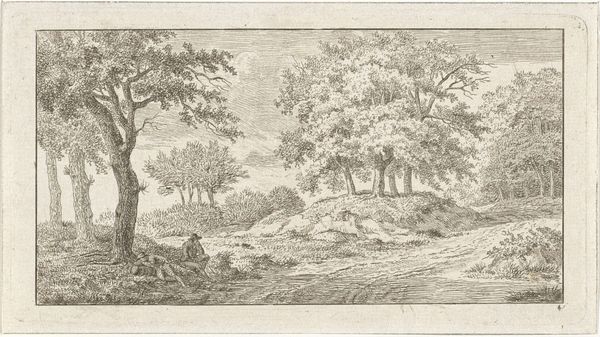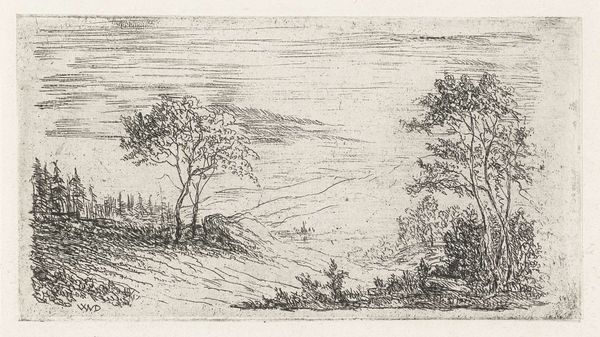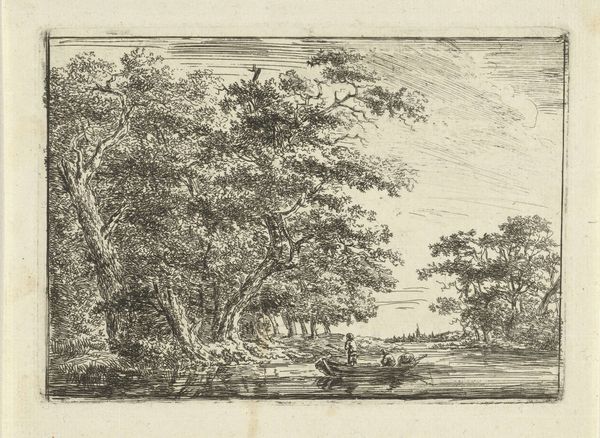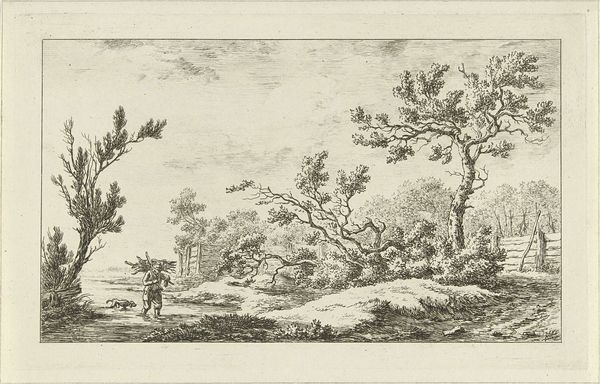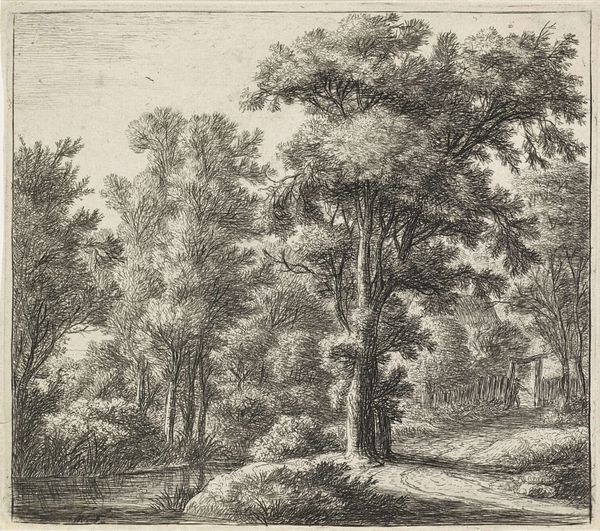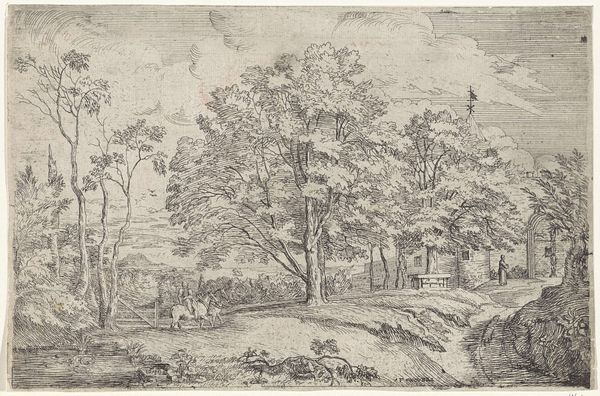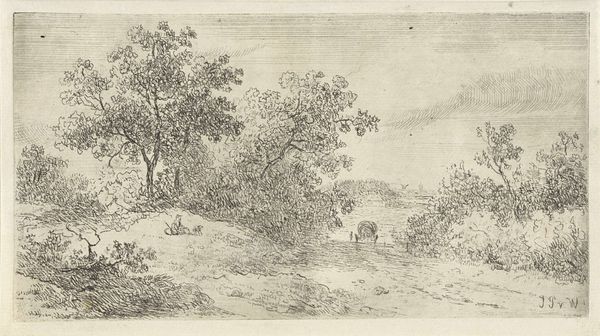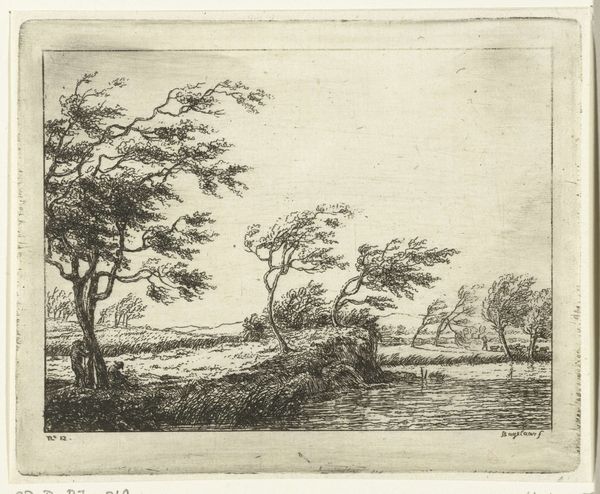
drawing, pencil
#
drawing
#
dutch-golden-age
#
pencil sketch
#
landscape
#
pencil
#
realism
Dimensions: height 180 mm, width 260 mm
Copyright: Rijks Museum: Open Domain
Editor: Here we have "Boomrijk landschap," or "Wooded Landscape" by Jacob van Ruisdael, made sometime between 1638 and 1682 using pencil. The details he's able to achieve with just pencil are striking, creating a serene, almost nostalgic mood. How does this piece fit into the broader art historical context? Curator: That's a good question. Ruisdael was working during the Dutch Golden Age, a period where the Netherlands saw tremendous economic and cultural growth. Landscapes, like this one, became incredibly popular. Do you think that rise in popularity may have been linked to national identity? Editor: Absolutely! I mean, it's almost like these landscapes served as visual emblems of Dutch pride, reflecting their connection to the land, and perhaps even projecting a sense of ownership or control over it? Curator: Precisely. And Ruisdael, in particular, played a key role. His landscapes weren’t just about pretty scenery; they reflected the social and political values of the rising merchant class. The detailed rendering and emphasis on the ordinary reflects a shift in artistic patronage and the values upheld in the Netherlands during its Golden Age. Editor: So the seemingly simple landscape isn't so simple after all, It embodies the values and aspirations of a society undergoing massive transformation. I see that. It makes me think about how art is so interwoven with power structures, like, who gets to commission art, what styles become dominant and popular at the time and why. Thank you, it's a great take on how museums influence public opinion. Curator: My pleasure. Remember to think about whose story gets told and how, and you'll start to see the hidden politics in any artwork.
Comments
No comments
Be the first to comment and join the conversation on the ultimate creative platform.



